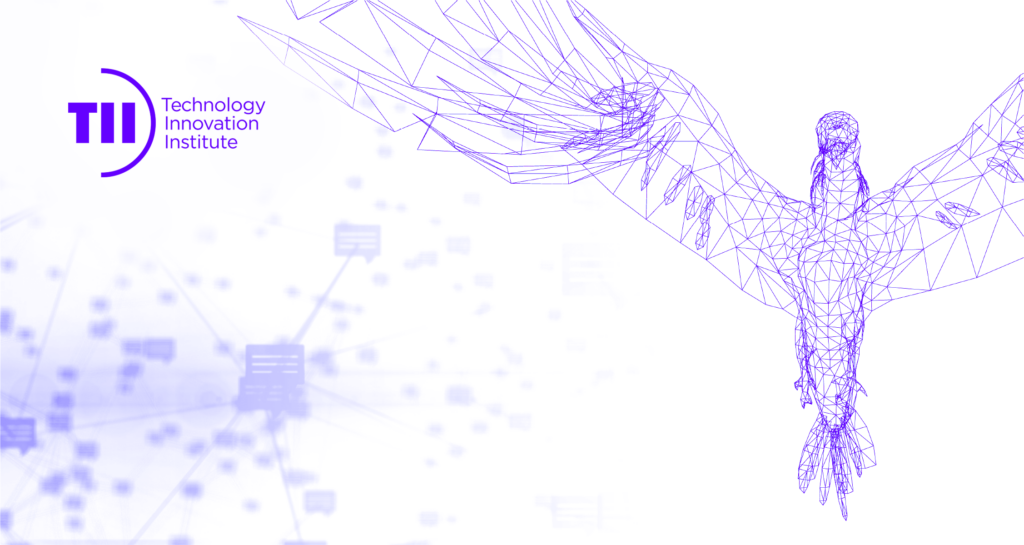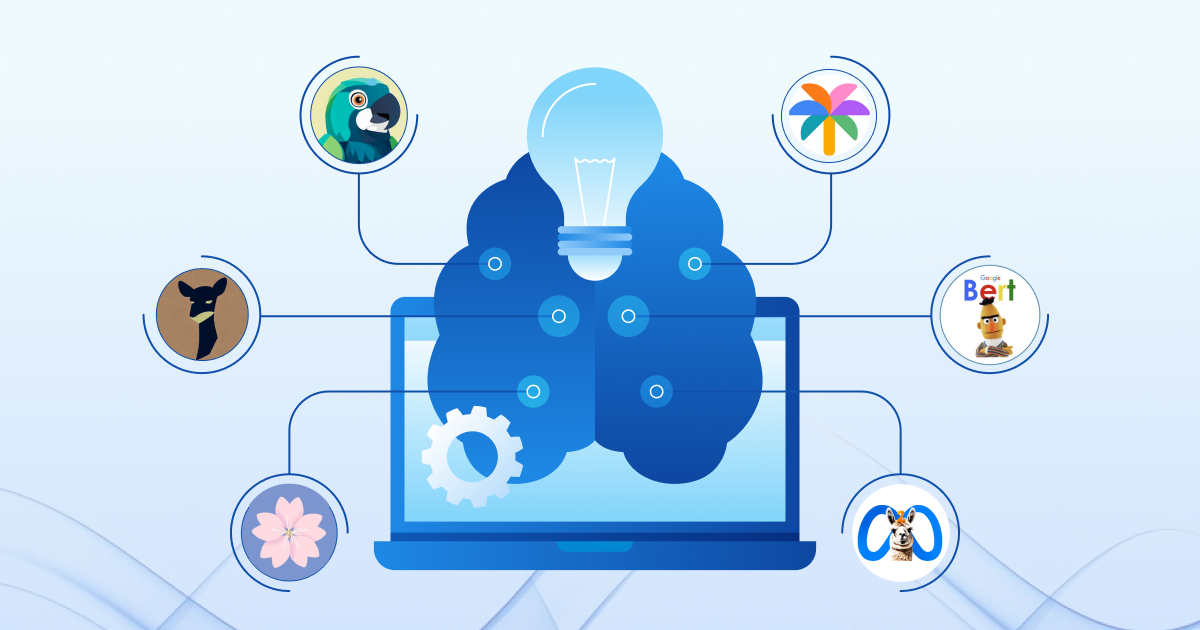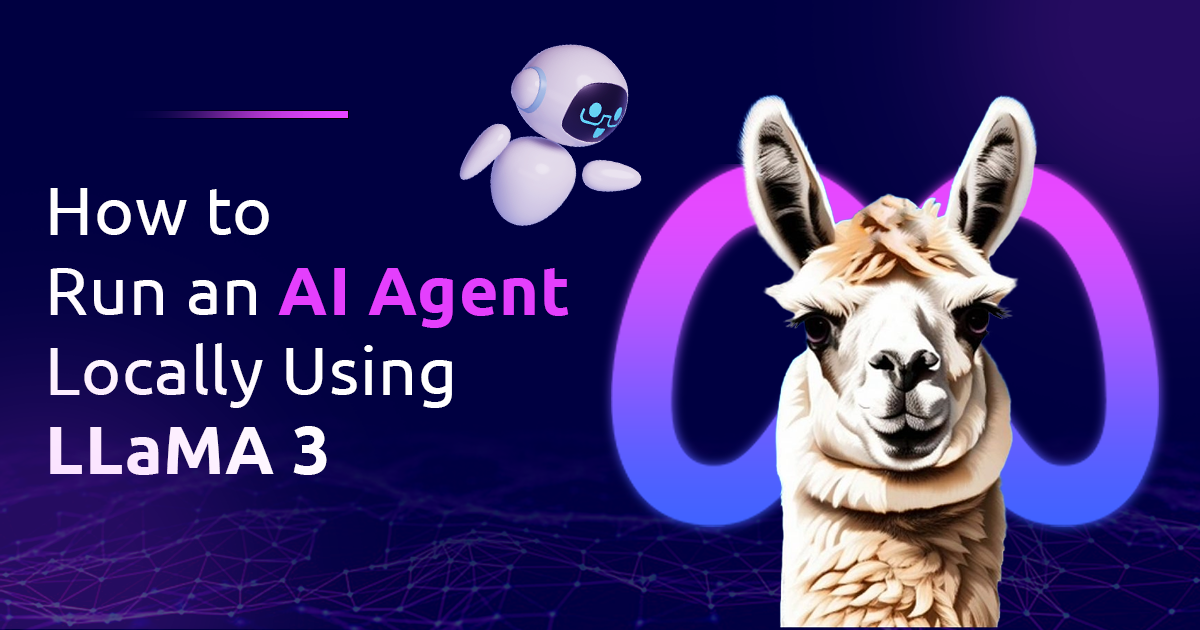Large language models(LLMs) have surfaced as revolutionary tools, fundamentally reshaping how we engage with technology.
While proprietary models like OpenAI’s GPT-4 and Google’s Gemini dominate headlines, the open-source community offers a treasure trove of equally powerful and accessible alternatives.
These open-source large language models drive innovation and democratize AI, empowering enthusiasts, researchers, and developers globally to expand the frontiers of what can be achieved.
In this guide, we will discover the top open-source llms that are revolutionizing the AI landscape and empowering a new era of technological advancement.
What is an Open-Source LLM?
An Open-Source Large Language Model (LLM) is an artificial intelligence, designed to comprehend and create human-like text using extensive data.
Unlike proprietary models, open-source LLMs are accessible for anyone to utilize, adapt, and distribute. They are developed collaboratively by diverse communities of researchers and developers, promoting innovation and cooperation.
These models empower users to implement sophisticated language processing tasks, such as translation, summarization, and conversational AI, without the high costs associated with commercial solutions.
By providing accessible and adaptable AI tools, open-source large language models play a crucial role in advancing technology and research.
What are the Benefits Of Open-Source Large Language Models?
Open-source LLM models offer significant advantages by making cutting-edge AI technology accessible and adaptable for various applications.
Their joint efforts guarantee ongoing enhancement and openness, cultivating creativity and confidence within the community. Here are some of the benefits of Large language models (LLMs) –
- Transparency and Trust
Open source models offer complete transparency in their algorithms and data sources, fostering trust and enabling thorough scrutiny for biases and ethical concerns.
- Customizability
Users can modify and adapt the models to fit specific needs, allowing for tailored solutions that proprietary models may not offer.
- Cost-Effective
Open-source LLMs eliminate the need for expensive licenses, making advanced AI technology accessible to individuals, startups, and organizations with limited budgets.
- Community Support and Collaboration
Open source projects thrive on the collective expertise of developers and researchers worldwide, resulting in ongoing enhancements, bug resolutions, and the introduction of innovative features.
9 Best Open-Source Large Language Models in 2024
The global LLM market is anticipated to grow significantly, with projections showing an increase from $1.59 billion in 2023 to $259.8 billion by 2030. This represents a compound annual growth rate (CAGR) of 79.80% over the forecast period from 2023 to 2030.
The realm of open-source large language models (LLMs) is diverse and expansive, offering potent tools that are transforming the natural language processing landscape. These models provide accessible, cutting-edge capabilities for developers, researchers, and enthusiasts alike, enabling a wide range of innovative applications and advancements.
1. LLaMA 3
- Developed By: Meta AI
- Sizes: 8 Billion & 70 Billion
- Architecture Type: Generative pre trained transformer model

The creation of Llama 3 represents a significant advancement in LLM technology for Meta. It is an advanced language model trained using extensive text data collection.
This comprehensive training allows Llama 3 to excel in various tasks, such as creative writing, language translation, and delivering informative answers to questions.
Llama 3 models will be available on multiple platforms, including, Microsoft Azure, AWS, Google Cloud, Hugging Face, Databricks, IBM WatsonX, Kaggle, Snowflake etc.
As research and development advance, we can anticipate even more groundbreaking applications of Llama 3 across various industries.
2. Google BERT
- Developed By: Google
- Sizes: 110 Million & 340 Millon
- Architecture Type: Transformer model

The deep bidirectional learning approach of Bidirectional Encoder Representations from Transformers(BERT) has revolutionized natural language processing.
Open-sourced by Google, BERT has become a cornerstone for various language understanding tasks, leveraging contextual embeddings to enhance performance in tasks like sentiment analysis, question answering, and named entity recognition.
Its impact extends beyond academia to applications in industry, where its versatility and robustness have been harnessed to improve search engines, chatbots, and recommendation systems.
3. BLOOM
- Sizes: 176 Billion
- Architecture Type: Decoder-only transformer model

In 2022, BLOOM was introduced following a year-long collaboration that included volunteers from over 70 countries and researchers from Hugging Face.
BLOOM, an autoregressive language model, was trained using extensive text data and large-scale computational resources to generate text continuations from prompts.
The launch of BLOOM marked a major advancement in making generative AI more accessible to everyone.
With 176 billion parameters, BLOOM ranks among the most powerful open source language models, excelling at generating coherent and precise text in 46 languages and 13 programming languages.
At its core, BLOOM values transparency, ensuring accessibility to its source code and training data for all users to deploy, study, and enhance.
Access to BLOOM is freely available within the Hugging Face ecosystem.
4. PaLM 2 by Google
- Developed By: Google AI
- Sizes: 340 Billion
- Architecture Type: Transformer model

PaLM 2, Google’s latest language model, advances multilingual, reasoning, and coding abilities.
PaLM 2 outperforms previous leading language models, including its predecessor PaLM, by excelling in advanced reasoning tasks like coding, classification, question answering, mathematics, translation, multilingual proficiency, and natural language generation.
These advancements are made possible through compute-optimal scaling, an enhanced dataset mixture, and architectural improvements.
Demonstrating Google’s dedication to responsible AI, PaLM 2 is subjected to thorough assessments for potential harms and biases, as well as its capabilities and applications in research and products.
Additionally, PaLM 2 is integrated into advanced models like Sec-PaLM and supports generative AI tools such as the PaLM API.
5. Falcon AI
- Developed By: Technology Innovation Institute(TII)
- Sizes: 40 Billion
- Architecture Type: Transformer’s decoder architecture

Falcon AI, particularly Falcon LLM 40B, was unveiled by the Technology Innovation Institute (TII) of the UAE.
The “40B” denotes its utilization of 40 billion parameters.
TII has developed a model with 7 billion parameters, trained using 1500 billion tokens. On the other hand, the Falcon LLM 40B has been trained using 1 trillion tokens sourced from RefinedWeb.
Falcon, distinguished as a model using autoregressive decoding exclusively, signifies a significant leap forward in AI models. Its development included intensive training on the AWS Cloud over a continuous span of two months, harnessing 384 GPUs.
The pretraining data primarily drew from publicly accessible sources, supplemented by curated content extracted from academic papers and social media discourse.
6. StableLM
- Developed By: Stability AI
- Architecture Type: Transformer’s decoder architecture

Stability AI, known for its AI-powered Stable Diffusion image generator, has unveiled StableLM, a collection of open-source large language models (LLMs).
In a recent announcement, the company made these models accessible on GitHub for developers to utilize and customize.
Similar to its competitor ChatGPT, StableLM is optimized for generating text and code efficiently. These models are trained on an expanded version of the Pile, an open-source dataset that integrates data from diverse origins such as Wikipedia, Stack Exchange, and PubMed.
Stability AI has initially released StableLM models ranging from 3 billion to 7 billion parameters, with larger models spanning 15 to 65 billion parameters slated for future release.
7. Cerebras-GPT
- Developed By: Cerebras Systems
- Sizes: 111M to 13B parameters

The Cerebras-GPT family is introduced to advance research on LLM scaling laws by utilizing open architectures and datasets, showcasing the ease and scalability of training LLMs on the Cerebras software and hardware platform.
This series encompasses models ranging from 111M to 13B parameters. Every model within the Cerebras-GPT series follows the Chinchilla scaling laws, maintaining peak computational efficiency with 20 tokens per model parameter.
Training took place on the Andromeda AI supercomputer, consisting of 16 CS-2 wafer-scale systems. Leveraging Cerebras’ weight streaming technology has simplified LLM training by separating compute processes from model storage. This innovation facilitated the efficient expansion of training across nodes through simple data parallelism techniques.
8. Vicuna -13B
- Developed By: LMSYS
- Sizes: 7B, 13B, 33B,65B
- Architecture Type: Auto-regressive language model

Vicuna-13B, a conversational model based on open source principles, fine-tunes the LLaMa 13B model by incorporating user-contributed conversations sourced from ShareGPT.
In initial assessments using GPT-4 as a benchmark, Vicuna-13B demonstrated superior performance. It outperformed models such as LLaMa and Stanford Alpaca in over 90% of cases and achieved chat quality comparable to or exceeding that of OpenAI’s ChatGPT and Google Bard.
The development of Vicuna-13B involved training on a dataset of user-contributed conversations obtained via ShareGPT, enhancing its capabilities as an open source chatbot built on the robust LLaMa-13B foundation.
9. XGen-7B
Salesforce has entered the fray with the launch of XGen-7B, a large language model boasting extended context windows beyond the existing open-source llm models.
The XGen-7B LLM’s 7B designation signifies 7 billion parameters. A model’s size increases with more parameters; for instance, those with 13 billion tokens necessitate robust CPUs, GPUs, RAM, and storage. Despite the resource demand, larger models yield more accurate responses due to their training on extensive data corpora. Thus, there exists a balance between size and accuracy.
XGen-7B stands out due to its impressive 8K context window. This expansive window allows for longer prompts and subsequently generates extended model outputs. The 8K context window covers the sizes of both input and output texts, enabling more extensive interactions with the model.
Closing Thoughts
The world of open-source large language models(LLMs) is a thrilling frontier of innovation and collaboration. From the remarkable capabilities of GPT to the versatile applications of T5 and beyond, these projects are democratizing access to cutting-edge AI.
By harnessing the collective intelligence of global developers, these LLMs are paving the way for groundbreaking advancements in fields as diverse as healthcare, finance, and beyond. As we look ahead, the evolution of these open source tools promises not only to redefine human-computer interaction but also to inspire new waves of creativity and problem-solving across industries.







